The Dailamites of Northern Persia were to become the Sassanian Empire’s answer to the indomitable Roman-Byzantine Legionnaire professional heavy infantry who were the best of their type in ancient times. What is certain is that the Romano-Byzantines had a high respect for Dailamite skills in face to face combat (see Farrokh & Khorasani, 2020, pp. 25-35). The Dailamites who often fought weapons such as daggers, swords, and javelins, were often deployed in the Caucasus during wars with the Romano-Byzantines.
Historical Documentary of the Dailamites by Invicta (Source: Invicta in YouTube).
The term Dailamites may derive from the “Dimilii“, a tribe of Medes who migrated into Northern Persia (roughly modern Gilan and Mazandaran today). Their descendants survive to this day in northern Iran. These Medes would have come from what is roughly the northwest of Iran – they still exist as the “Dimili” among another Iranian people known as the Za-Za believed by linguists to speak a variant of the Parthian Pahlavi language generally distinct from modern Kurmanji (Bahdenani and Sorani) spoken by the majority of modern-day Kurds.

Recreation of Sassanian infantry units during the 2,500 year celebrations of 1971- note the Drafsh Kaviani displayed at the front. Roman descriptions of Sassanian infantry were negative at first, but this changed with the arrival of Dailamite infantry from northern Iran (Picture source: Kaveh Farrokh, p.230, سایههای صحرا-Shadows in the Desert: Ancient Persia at War-Персы: Армия великих царей, 2007).
The pace and timing of the Dimilii migrations are not exactly clear when this took place, as migrations were gradual, however we are certain that by the time of Sassanian king Khosrow I (r. 531-579 CE), the Dailamites were fully established in Northern Persia.
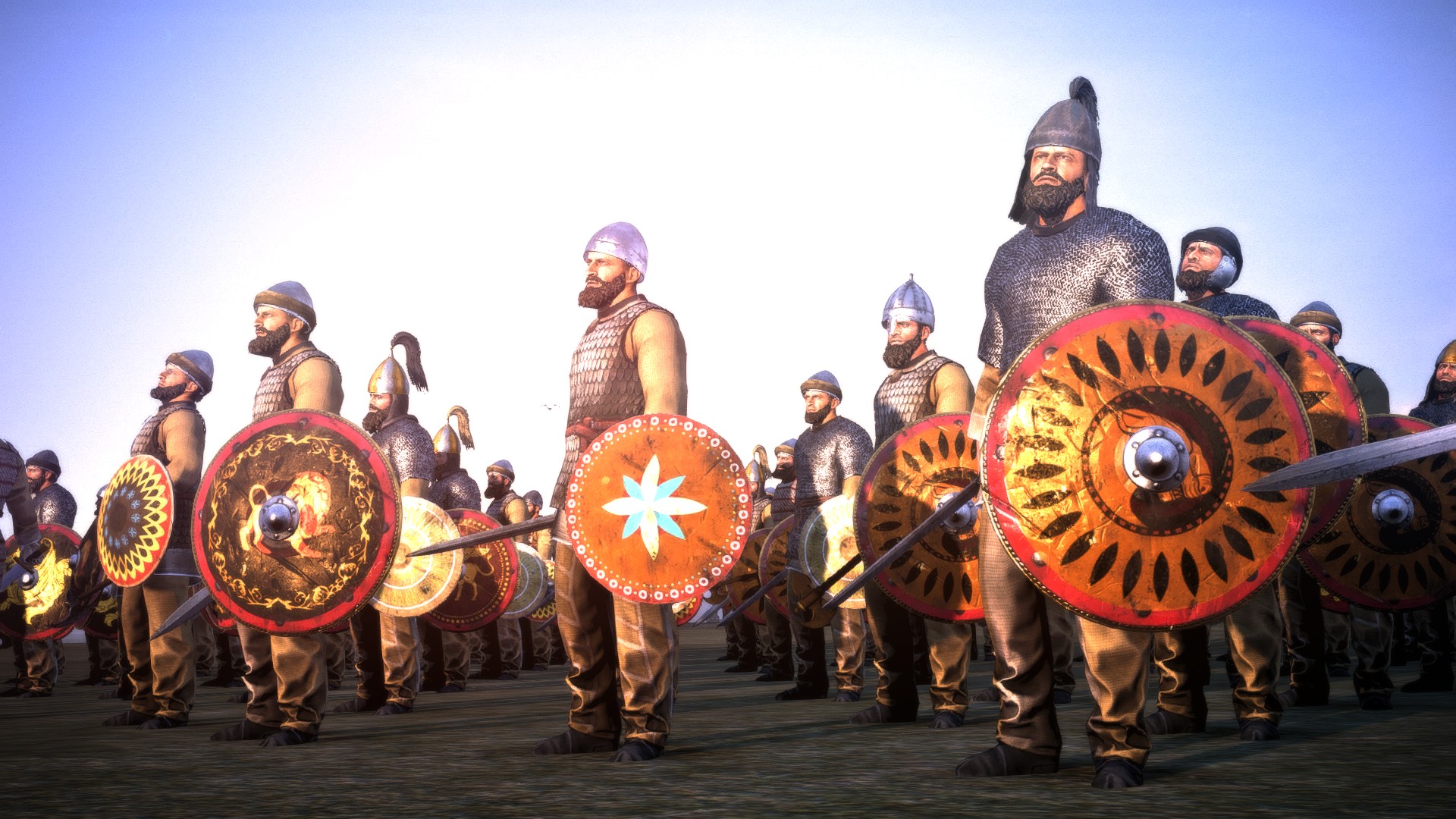
A depiction of Dailamite infantry provided by the Total War Rome 2 venue (Source: Facebook).
When the Sassanian Empire (224-651 CE) collapsed in the wake of the Arabian invasions it was in the north where Iranian resistance finally solidified. The one singular Arab failure in all of their otherwise spectacular successes in Iran, Byzantium, Central Asia, Syria, North Africa and Spain, was in northern Persia. The Dailamites solidly blocked Arab troops from entering northern Persia. As noted by Overlaet
“Daylaman remained unconquered…until at least the 8th century AD…early Daylamite rulers even exhibited extreme anti-Arab attitudes and sought the restoration of the Persian Empire and the of the ancient religions” (1998, p.268).
The main difficulty the Arabs faced was that they were facing very “European” terrain of mountains and dense forests in Mazandaran, Gilan and Rasht and were unable to stand up to the tough Dailamite infantry. The Arabs thought very highly of these warriors whom they called “Al-Hamra” (Red-faced ones) and recruited some of these for their own armies to fight in places as far away as Spain. The vast majority of the Dailamites however refused to bow to the authority of the Caliphs, even after the complete collapse of the Sassanians.
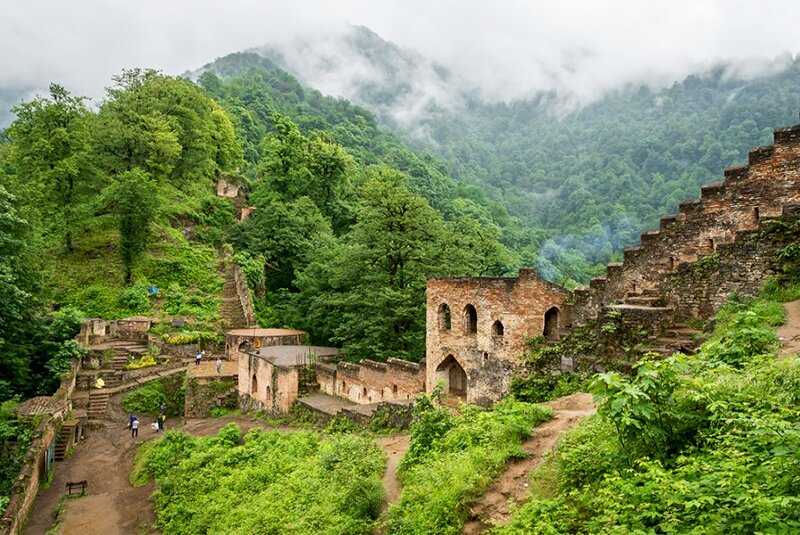
A photograph of one of densely forested regions of northern Iran – the above photo is from a UNESCO-tagged area identified as the Hyrcanian forests (Source: Tehran Times).
Local legends of Mazandaran report of anti-Caliphate female resistance leaders, one such figure identified as a certain Azadeh, most likely a descendant of the major Parthian and Sassanian clans that had survived in northern Iran after the fall of the Sassanian Empire.
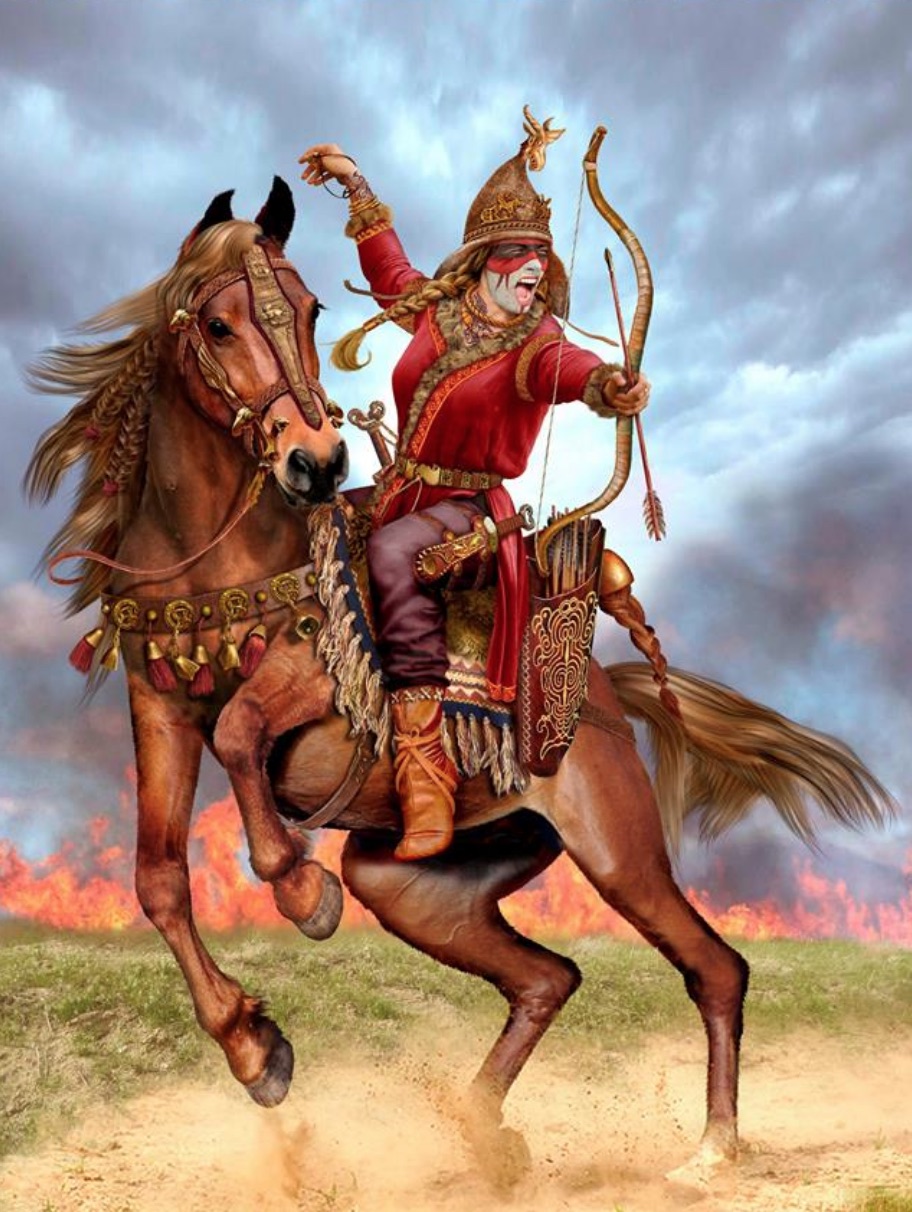
Female Scythian horse archer (Source: Osinform). The Scythians and their Sarmatian successors of the steppes and the South Russian/Ukraine regions were similar to their Iranian cousins in Persia where Romans made references to female fighters in the Sassanian army for example. Weapons have also been discovered in the graves of Parthian females in northern Iran – for more see:
- Farrokh, K., & Karamian, Gh. (2018). Weapons in the tombs of Parthian Era Women in Northern Iran: A Preliminary Report. Fezana Journal (Publication of the Federation of Zoroastrian Associations of North America), Vol. 32, No.3, Fall/September, pp. 18-21. – For more on the weapons found in the graves of Parthian women fighters in the graves at Vestmin consult pages 67-68 in: Karamian, Gh., Farrokh, K., Kiapi, M.F., Nemati, H. (2018). Graves, crypts and Parthian weapons excavated from the gravesites of Vestemin. HISTORIA I SWIAT, No.7, pp. 35-70.
The Abbasids did manage to enter the region in 771 CE and stayed for nearly a century, but even then their authority proved sparse at best. During the reign of Harun al-Rashid (763-809 CE), many Muslim Shiites fled to the Dailamites to seek refuge from the persecutions of the Sunni Caliphate authorities. The most notable of these were the Alids, who were either descendants or followers of the Imam Ali, son-in-law of the Prophet of Islam, Muhammad. Prominent among these was a certain Sheikh Zayd, who began to win converts to Shiite Islam among the Dailamites. Even as the Buyid dynasty of the Dailamites seized power and took over much of Iran and Mesopotamia (including Baghdad), large parts of northern Persia remained largely non-Muslim, even as while Shiism was gaining ground.
What is very interesting about Dailamite arms is that (despite being infantry), they were armed with the same weapons as the Sassanian Elite Cavalry (the Savaran). Note the late-Sassanian Dailamite sword handle and top of sheath below:
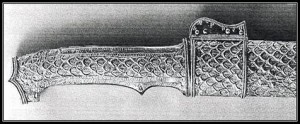
Dailamite sword found in northern Iran. This is of the late Sassanian type. The fact that the Dailamites were allowed to carry swords of the elite Sassanian cavalry is an indication that the Dailamites were among the most respected warriors of the Sassanian Dynasty.
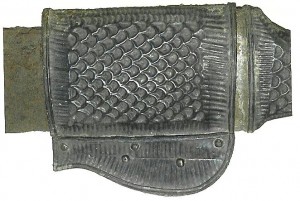
Photograph of the locket-suspension section of a late-Sassanian sword of the late Sassanian Savaran cavalry by Dr. Manouchehr M. Khorasani, a leading authority of Iranian military studies.
Further readings:
Farrokh, K. (2017). Armies of Ancient Persia: The Sassanians. Pen & Sword Publishers.
Khorasani, M.M. (2006). Arms and Armor from Iran: The Bronze Age to the end of the Qajar Period. Legat Verlag Publishers.
Overlaet, Bruno (1998). Regalia of the Ruling Classes in Late Sassanian Times: The Riggisberg Strap Mountings, Swords and Archer’s Fingercaps. In Riggisberger Berichte – Entlang der Seidenstrasse – Abegg-Stiftung, Riggisberg, pp.267-297.
Price, M. (2008). Iran’s Diverse Peoples: A Reference Sourcebook. ABC-CLIO.



